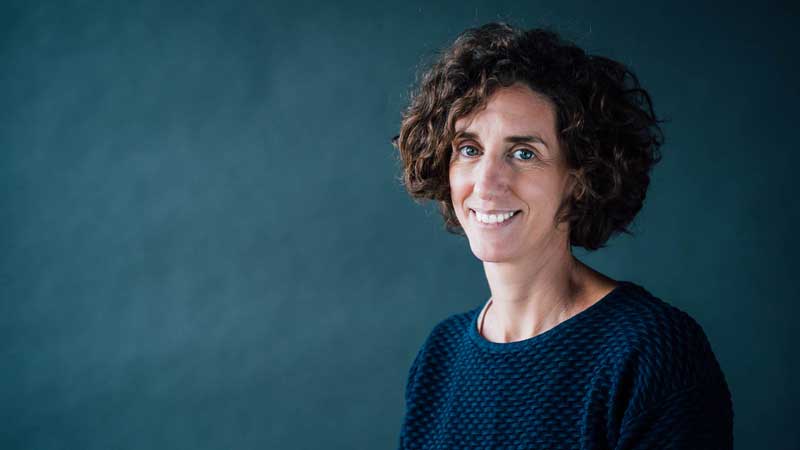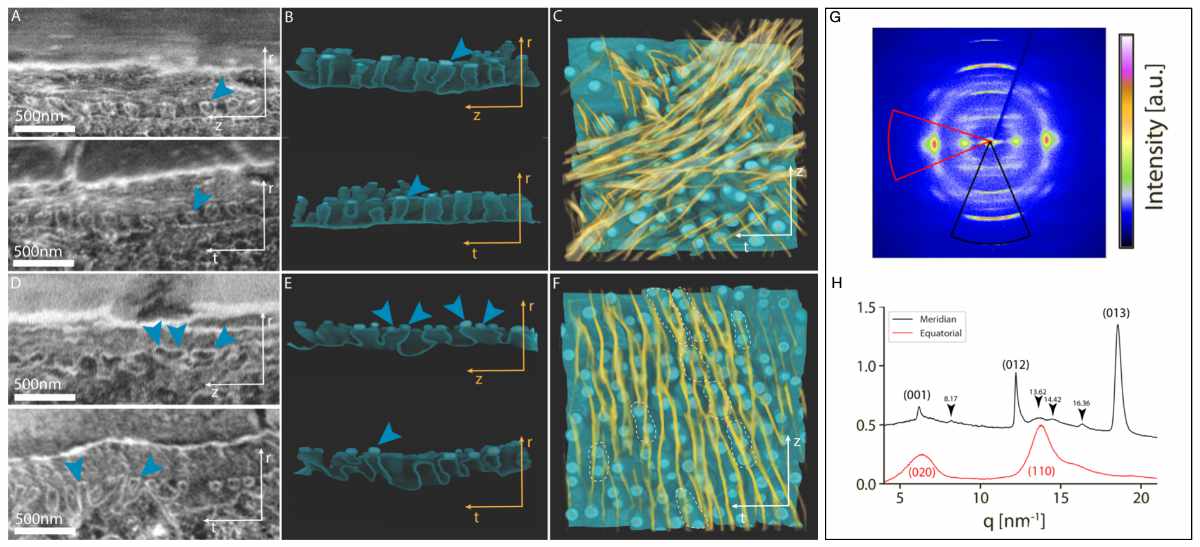Yael Politi Group
Chitin based biological materials and biomineralization

© TUD CMCB, Magdalena Gonciarz
The arthropod cuticle is a powerful model system for studying how biocomposite materials properties are governed by their molecular interactions and underlying nano-scale structure, and how these properties are tuned to produce versatile multifunctional materials. The research in the group aims at a quantitative definition of the structure-properties relationships in the cuticle. Specifically, we investigate the molecular interactions between cuticle components and how these interaction determine the materials properties over several length scales to enable a particular function, for example venom injection by the spider fang, or a combination of multiple functions such as in the main vibration mechano-sensor of the wandering spider Cupiennius salei, which also functions as a proprioceptor. Further, we are working towards understanding cuticle formation mechanisms, in particular how fiber orientation is controlled by the organism. Here, we aim to determine what is the extent of cellular control over fiber orientation as opposed to the role of chitin-protein co-assembly in determining the final fiber architecture. Despite years of research this is still an unresolved fundamental question in the understanding of the formation of biological fibrous matrices. We address this question using EM and light microscopy of biological cuticle deposition as well as in vitro assays of chitin-protein co-assembly.
We are also intrigued by biomineralization in marine organisms, and in particular Echinoderms. We study sea urchin skeletal element morphogenesis and crystallography in order to understand the manner in which cells interact with minerals and control their shape. The sea urchin skeletal elements are often made of single crystals of calcite and exhibit complex shapes and curved, smooth surfaces, an unusual morphology for crystalline material. This is most likely owed to their formation involving an amorphous precursor in confined spaces defined by the skeletogenic cells. We therefore also study the amorphous to crystalline transition in sea urchin skeletal elements as well as in in-vitro systems, and in particular the effect of water, organic and inorganic additives on the transformation energy landscape and kinetics.

Future Projects and Goals
The ultimate goal of the group is twofold; we aim at understating the structure-properties-function relationships in biological materials, mainly that of the arthropod cuticle, and to elucidate the mechanisms of their formation. We therefore employ biological as well as material-science perspectives and methodologies to solve these questions. Currently we study how cuticular structures function as mechano-sensors in spiders and in insects, how the optical properties of the horse show crab cornea are determined by its underlying fiber architecture, and how cuticular tools achieve impressing mechanical properties in the absences of mineralization. In addition, we study the molecular interactions within the cuticle, namely, chitin-protein, inter-protein and chitin-protein-water interactions.
Methodological and Technical Expertise
- Small and wide-angle x-ray scattering (SAXS, WAXS)
- (cryo)FIB/SEM 3D imaging and 3D automatic segmentation and data analysis
- X-ray microtomography
- X-ray and vibrational spectroscopy (XAS, XRF, EDX, Raman, FTIR)
- Wide-field, phase-contrast, polarized light and fluoresce (CLSM) microscopy